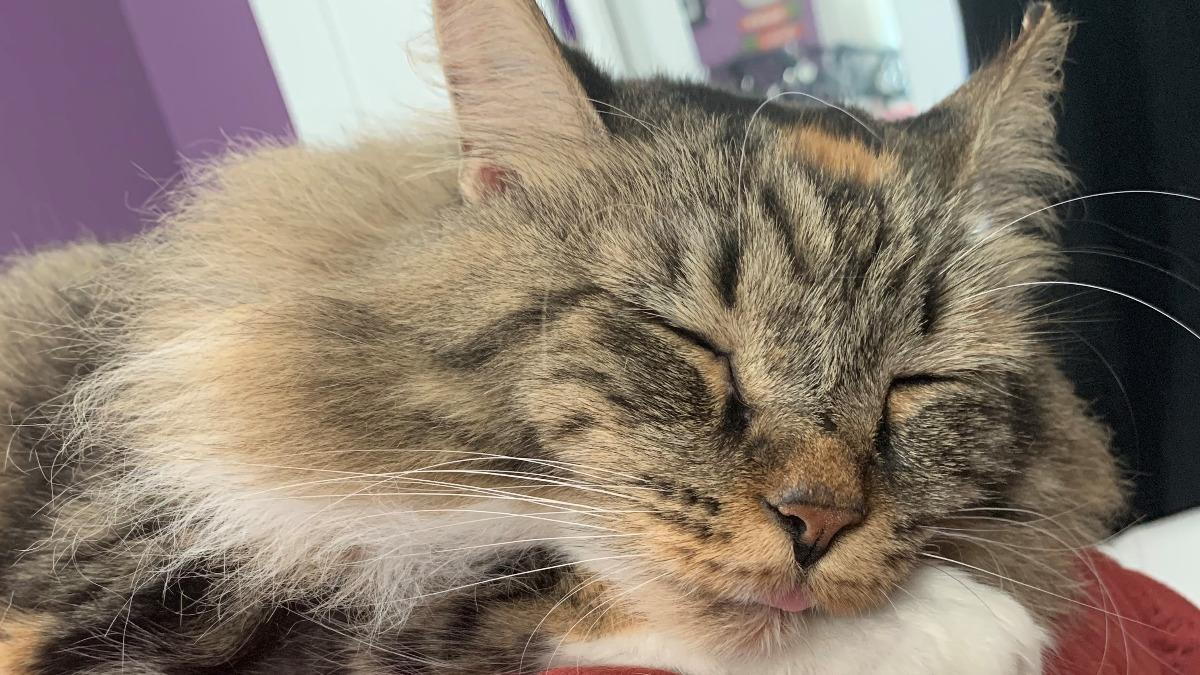Urinary Blockage in Cats

- posted: Jul. 17, 2021
Why Do Male Cats Experience Urinary Blockage?
Urethral obstruction—better known as “blocked cat”-- is a serious, painful and potentially deadly condition in male cats. Why does this happen, how is it treated and how can it be prevented?
Male cats have a very narrow urethra (the small tube that exits the bladder). In some male cats, crystals form in the urine. These crystals can irritate the urethra and form a plug with mucus and cells preventing urine from passing. If the cat is unable to urinate, he becomes very ill. Common symptoms include extreme lethargy, vomiting, lack of urine production and straining in the litter pan. Because the cat cannot pass urine, kidney damage can occur within 24-72 hours and the condition can be fatal if untreated. Urethral blockage can also be caused by small bladder stones lodging in the urethra, functional narrowing of the urethra with scar tissue or muscle spasms or by urethral or bladder tumors. This condition is extremely rare in females due to their wider urethra though there have been rare instances of a large stone blocking the urethra of a female cat.
The exact cause of crystal formation and urinary blockage is not known but obesity, eating a dry food diet and genetic predisposition are all factors. Cats with recurrent inflammation or bladder infection may also be at increased risk.
A blocked cat is an emergency but symptoms are sometimes missed or confused for other less serious conditions such as constipation or bladder infection. If your male cat is straining in the litter pan frequently visiting the litter box, and/or producing little to no urine, have him checked immediately by your vet. Cats can make a full recovery if caught early.
Treatment includes sedating the cat, passing a urinary catheter into the bladder to relieve the obstruction and hospitalization to receive IV fluids, pain medications and other medications to reduce inflammation and spasms of the urethra. Long term treatment includes feeding canned cat food to increase moisture in the diet and possibly drugs to reduce stress or to reduce spasms in the urethral muscle. Usually a prescription diet to reduce crystal formation is used. Encouraging cats to drink more water and reducing stress may also help prevent urethral obstruction. In some cases, if a blockage recurs multiple times, a surgery to create a wider urethral opening known as perineal urethrostomy or “PU” surgery is performed.
Urethral obstruction is a fairly common problem in young to middle-aged male cats. It is considered an emergency—do not wait to take your cat to the vet if he has any of the symptoms described above or if he has blocked before. The sooner he is seen the better the chance of recovery.
This blog brought to you by the Patton Veterinary Hospital serving Red Lion, York and the surrounding communities.
https://animalmedcenter.com/perineal-urethrostomy/
https://www.mspca.org/angell_services/urethral-obstruction-in-cats/
Location
Patton Veterinary Hospital
425 E Broadway
Red Lion, PA 17356
